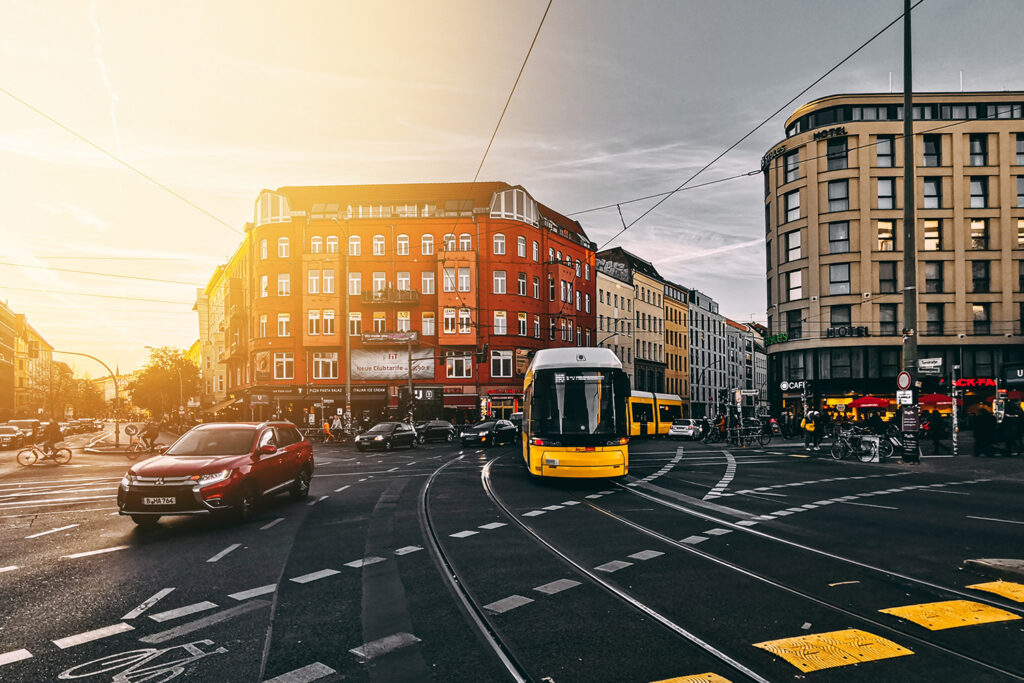Climate referendum: How can Berlin become climate neutral by 2030?
On March 26, Berliners will go to the polls to vote in a referendum on a climate-neutral Berlin. The aim is to effect an amendment to Berlin’s Climate Protection and Energy Transition Act, which provides for the city to become climate-neutral by 2045. But a citizens’ initiative wants to see this goal pushed forward to 2030. Philipp Kassing, Energy Consultant in our Berlin office, explains what would be needed to achieve this goal.
Recent years have shown us that climate change is not something that may or may not happen in the future. It is here – in our ecosystems, cities and neighbourhoods – in the form of droughts in summer, forest fires and heavy rains resulting in floods. And there is a risk that these changes in our climate could escalate. As Johan Rockström, a leading, internationally recognised scientist at the Potsdam Institute for Climate Impact Research (PIK), explained in his speech at the World Economic Forum in Davos, nine of the 16 possible tipping points in our global climate systems are already showing signs of instability. If these systems, such as Greenland’s ice sheet, were to tip over, they would go from stabilising the climate to escalating global warming. The environmental effects of climate change, which we are already feeling today, would become more severe many times over. How close we are to irreversibly global warming up to 4°C is unclear. What is clear, however, is that we must act.

The aim of the referendum, for which the initiators have collected more than 260,000 signatures, is a legally binding and significant tightening of the city’s ambitions to protect the climate locally.
A move away from fossil fuels towards an energy supply generated from renewable sources as quickly as possible is something Buro Happold supports whole-heartedly. If such a conversion were to succeed in Berlin, it could serve as a model and spark a domino effect inspiring more cities around the world to increase their climate protection measures. The learning effects could be used to implement transformations more quickly.
However, it would also pose highly technical, bureaucratic and practical challenges for cities like Berlin because climate neutrality means a complete conversion of all energy sectors. Not just the electricity production, but also the supply to buildings, industry, transport and agriculture.
Electricity
Electricity will be the most important primary energy source, supplying not only Berlin commerce and its consumers, but also urban transport, parts of the air traffic, industry and a large part of the heat demand for buildings. All this electricity will have to be generated using wind power, photovoltaics and biomass. In addition, huge capacities of hydrogen storage, battery storage and fuel cells are needed to provide sufficient energy during periods when little or no energy can be generated with wind and solar power, because there is neither wind nor sunlight. To compensate for the storage and conversion losses and still cover demand, additional capacity must be provided by electricity companies. However, generating power through renewable sources only also means expanding Berlin’s infrastructure – not only its electrical grids but also hydrogen pipelines.
Buildings
The energy supply to buildings would also look completely different too. In 2030 most of Berlin’s district heating would have to be generated by heat pumps that harness heat from industrial waste heat and wastewater, from the city’s rivers, as well as geothermal energy. But providing heat using heat pumps would also require a major investment in Berlin’s district heating infrastructure.
The buildings that cannot be connected to district heat would also be largely heated individually by heat pumps. In many cases, that requires renovation to make the exterior envelope more energy efficient as well as centralising the heating system at building level. Whether enough buildings can be retrofitted by 2030 is questionable, which makes the use of heat pumps on a large scale more difficult. Alternative, albeit significantly less efficient forms of heating would be green electricity, bioenergy – such as biogas – or, in the future, hydrogen.
The desired transformation of the urban heat supply would have to overcome many bureaucratic hurdles. In view of the urgency, a dialog between science, companies and authorities should be sought as quickly as possible.
Traffic
Individual traffic would also have to change significantly. Firstly, here would be significantly fewer cars on inner-city roads within the Berlin ring road, and, secondly, they would be vehicles with low or no CO2 emissions. Instead of heavy motorised traffic, priority would be given to footpaths, bicycle lanes and bus lanes. Freight traffic would shift to rail and water as much as possible. Only deliveries to supermarkets in the inner-city area would still be covered by trucks, making the development of fuel cells for lorries necessary.

Professionals
The transformation of energy production requires the construction of numerous new infrastructures – from wind farms and photovoltaic systems to the energy refurbishment of buildings, the conversion of district heating, new bike paths, charging stations and electrochemical plants to produce sustainable jet fuel. Of course, they must be built first. The only question is: by whom?
It is no secret that Germany suffers from a shortage of skilled workers, especially in trade. This presents a major problem for Berlin’s climate protection goals. The problem is compounded by the lack of expertise. A renewable energy system is significantly more complex than a fossil one. Energy generation is shifting from a few centralised to many decentralised, networked plants, and technology is needed to compensate for the fluctuations in energy generation over time.
Collective responsibility
The path to climate neutrality would fundamentally change Berlin and our way of life. However, the March 26 referendum does not represent a magic button that can be pushed to make this happen. We must all continue to keep up the pressure to act and participate in this collective task. The desired holistic transformation of urban infrastructures to a highly interconnected and integrated system is a daunting task that will require an enormous amount of planning and coordination. In terms of timing, the conversion and expansion of the capacity of power plants, heat supply, transport and the supply of industry must be properly coordinated. This transformation can only succeed together, in a well-planned and coordinated process involving all stakeholders – politics, business, science and Berliners.
The task is daunting, but we would gain much.



